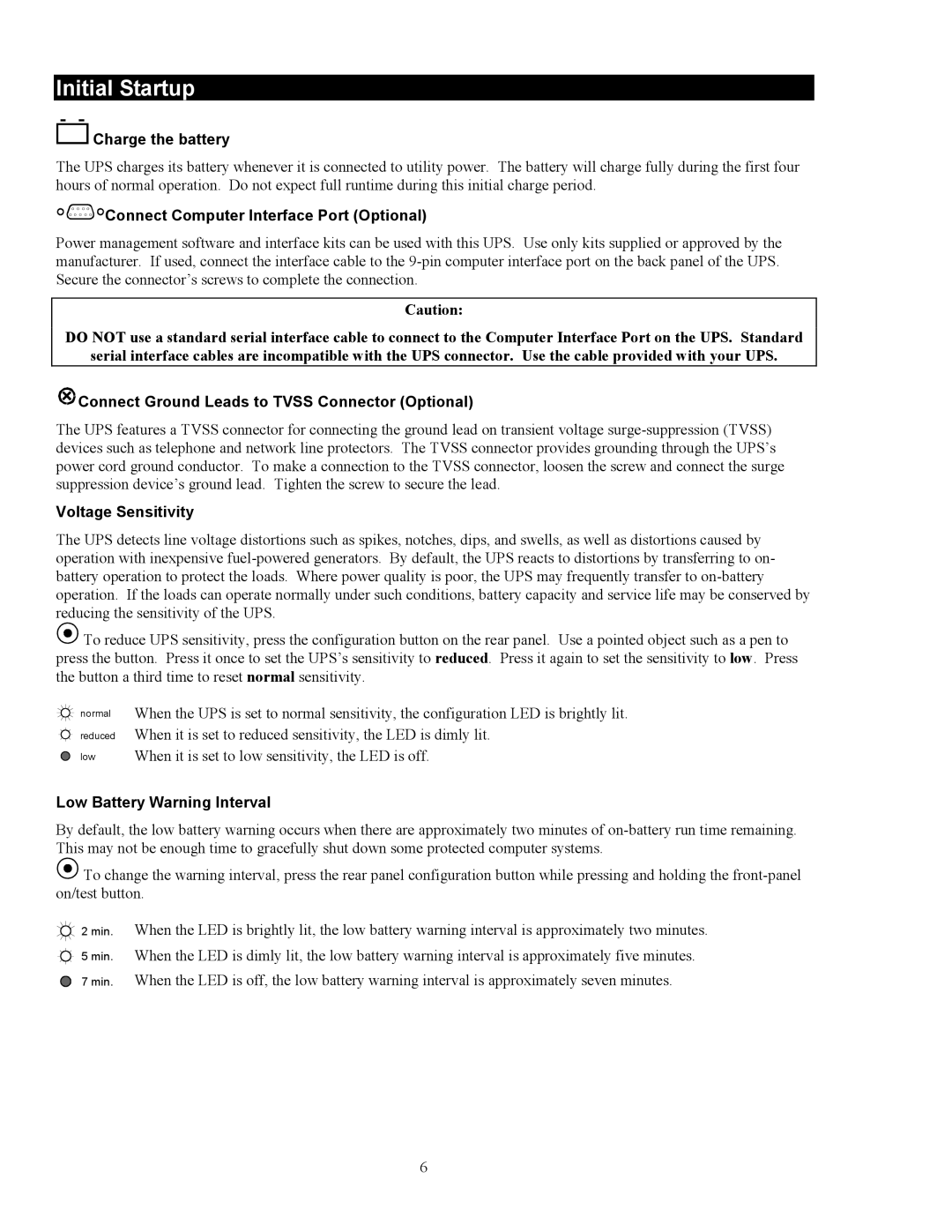
Initial Startup

 Charge the battery
Charge the battery
The UPS charges its battery whenever it is connected to utility power. The battery will charge fully during the first four hours of normal operation. Do not expect full runtime during this initial charge period.







 Connect Computer Interface Port (Optional)
Connect Computer Interface Port (Optional)
Power management software and interface kits can be used with this UPS. Use only kits supplied or approved by the manufacturer. If used, connect the interface cable to the
Caution:
DO NOT use a standard serial interface cable to connect to the Computer Interface Port on the UPS. Standard
serial interface cables are incompatible with the UPS connector. Use the cable provided with your UPS.

 Connect Ground Leads to TVSS Connector (Optional)
Connect Ground Leads to TVSS Connector (Optional)
The UPS features a TVSS connector for connecting the ground lead on transient voltage
Voltage Sensitivity
The UPS detects line voltage distortions such as spikes, notches, dips, and swells, as well as distortions caused by operation with inexpensive
![]() To reduce UPS sensitivity, press the configuration button on the rear panel. Use a pointed object such as a pen to press the button. Press it once to set the UPS’s sensitivity to reduced. Press it again to set the sensitivity to low. Press the button a third time to reset normal sensitivity.
To reduce UPS sensitivity, press the configuration button on the rear panel. Use a pointed object such as a pen to press the button. Press it once to set the UPS’s sensitivity to reduced. Press it again to set the sensitivity to low. Press the button a third time to reset normal sensitivity.
normal
reduced
low
When the UPS is set to normal sensitivity, the configuration LED is brightly lit. When it is set to reduced sensitivity, the LED is dimly lit.
When it is set to low sensitivity, the LED is off.
Low Battery Warning Interval
By default, the low battery warning occurs when there are approximately two minutes of
![]() To change the warning interval, press the rear panel configuration button while pressing and holding the
To change the warning interval, press the rear panel configuration button while pressing and holding the
![]() 2 min. When the LED is brightly lit, the low battery warning interval is approximately two minutes.
2 min. When the LED is brightly lit, the low battery warning interval is approximately two minutes.
![]() 5 min. When the LED is dimly lit, the low battery warning interval is approximately five minutes.
5 min. When the LED is dimly lit, the low battery warning interval is approximately five minutes. ![]() 7 min. When the LED is off, the low battery warning interval is approximately seven minutes.
7 min. When the LED is off, the low battery warning interval is approximately seven minutes.
6
